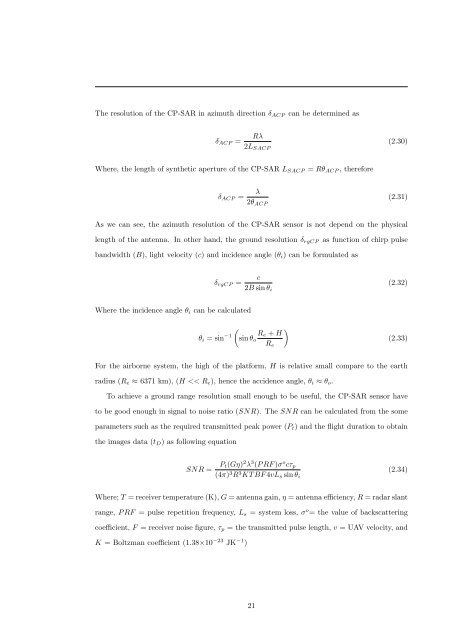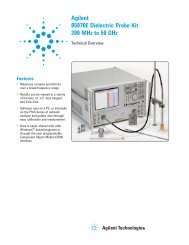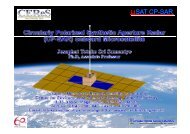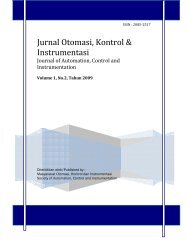Development of Circularly Polarized Microstrip ... - CEReS - åè大å¦
Development of Circularly Polarized Microstrip ... - CEReS - åè大å¦
Development of Circularly Polarized Microstrip ... - CEReS - åè大å¦
You also want an ePaper? Increase the reach of your titles
YUMPU automatically turns print PDFs into web optimized ePapers that Google loves.
The resolution <strong>of</strong> the CP-SAR in azimuth direction δ ACP can be determined as<br />
δ ACP =<br />
Rλ<br />
2L SACP<br />
(2.30)<br />
Where, the length <strong>of</strong> synthetic aperture <strong>of</strong> the CP-SAR L SACP = Rθ ACP , therefore<br />
δ ACP =<br />
λ<br />
2θ ACP<br />
(2.31)<br />
As we can see, the azimuth resolution <strong>of</strong> the CP-SAR sensor is not depend on the physical<br />
length <strong>of</strong> the antenna. In other hand, the ground resolution δ rgCP<br />
as function <strong>of</strong> chirp pulse<br />
bandwidth (B), light velocity (c) and incidence angle (θ i ) can be formulated as<br />
δ rgCP =<br />
c<br />
2B sin θ i<br />
(2.32)<br />
Where the incidence angle θ i can be calculated<br />
(<br />
)<br />
θ i = sin −1 R e + H<br />
sin θ o<br />
R e<br />
(2.33)<br />
For the airborne system, the high <strong>of</strong> the platform, H is relative small compare to the earth<br />
radius (R e ≈ 6371 km), (H






